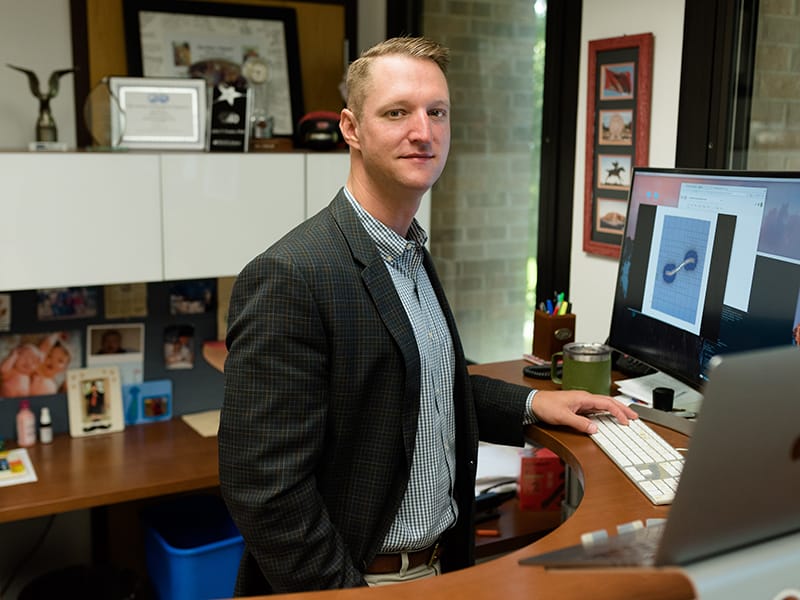Upcoming Event: Babuška Forum
John Foster, Oden Institute
10 – 11AM
Friday Oct 17, 2025
The peridynamic theory of solid mechanics was originated as a reformulation of classical elasticity primarily motivated by the desire to replace the spatial derivatives in the governing equations with an integral functional that provides mathematical consistency with the nature of displacement discontinuities (e.g. cracks) in an otherwise continuously deforming body. Numerical simulations conducted with discrete peridynamic equations have demonstrated a unique capability to easily capture many interesting and challenging problems related to crack propagation, e.g. crack branching, oscillatory crack path instabilities in membranes, pervasive failure of brittle material, and complex fracture patterns in composite laminates. The early research in peridynamics focused on the theory’s attractiveness for modeling fracture, while utilizing simple constitutive models. However, peridynamics offers a rich kinematic description of deformation that is quite capable of very complex material modeling. The focus of this talk will be on the fundamental kinematic quantities that describe deformation in a peridynamic body, a rigorous and straightforward derivation of the peridynamic momentum equation, and a discussion of interesting applications and open topics.
John T. Foster is a professor in The Hildebrand Department of Petroleum and Geosystems Engineering, The Department of Aerospace Engineering and Engineering Mechanics, and a core faculty member at the Oden Institute for Computational Engineering and Sciences at The University of Texas at Austin. Before joining UT-Austin, he was previously a faculty member in mechanical engineering at UTSA and was a Senior Member of the Technical Staff at Sandia National Laboratories where he worked for 7 years. He received his BS and MS in mechanical engineering from Texas Tech University and PhD from Purdue University.He is a registered Professional Engineer in the State of Texas. His research interests are in computational mechanics and multi-scale modeling with applications to geomechanics, impact mechanics, fracture mechanics, and anomalous transport processes.
